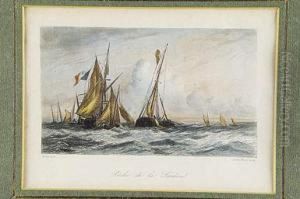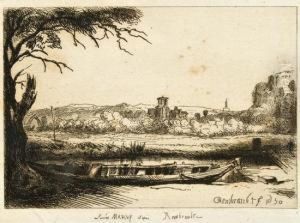Louis Marvy Paintings
Louis Marvy was a French artist and engraver, born in 1815 and passed away in 1850. Marvy's artistic journey began in the picturesque landscapes of France, where he was deeply inspired by the natural beauty and historical depth of his surroundings. Marvy's early life was marked by a profound interest in the arts, leading him to pursue studies that would hone his skills in engraving and drawing. His dedication to his craft was evident in the meticulous details and the evocative qualities of his works, which ranged from landscape engravings to illustrative portraiture.
Marvy's work during the mid-19th century was emblematic of the Romantic movement, which emphasized emotion and individualism as well as glorification of the past and nature. He was particularly known for his mastery in the technique of steel engraving, a method that allowed for finer details and a greater depth of shading compared to the more traditional copper engraving. This technique played a crucial role in the reproduction of artworks, making Marvy's contributions significant in the dissemination of visual culture during his time.
Despite his talents, Louis Marvy's career was relatively short-lived; he died at the young age of 35 in 1850. Nevertheless, within his brief period of productivity, Marvy left behind a legacy that would be appreciated by art historians and enthusiasts alike. His works not only captured the essence of the Romantic era but also paved the way for future generations of artists to explore and express through the medium of engraving. Marvy's engravings, often rich with atmospheric effects and meticulous attention to detail, are considered valuable examples of 19th-century French art, reflecting the artistic and cultural currents of his time.
Today, Louis Marvy's engravings are held in high esteem, residing in various art collections and museums around the world. They serve as a testament to his skill, vision, and contribution to the art world, despite the brevity of his career. Marvy's influence extends beyond his own era, offering insights into the technological advancements in art production and the evolving tastes of the 19th-century European art scene.

